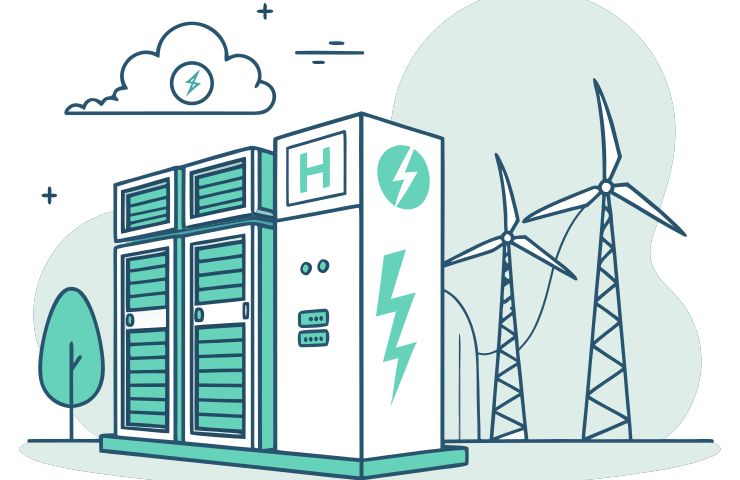
Hydrogen Production Poised for a Comeback as AI Power Demand Surges
October 13, 2025Ever wonder why investors are suddenly buzzing about hydrogen production? With data centers guzzling more power than ever and companies racing to meet zero-carbon goals, it’s clear hydrogen’s moment has arrived. Even amid shifting politics and policy headwinds, big names like Bloom Energy are stepping up, betting their fuel cell technology can deliver reliable, low-carbon power.
Why AI Is Shifting the Energy Conversation
As AI workflows blow up, so does demand for nonstop, low-carbon electricity. Solar and wind are awesome, but they can’t always carry the load 24/7 without sky-high storage. That’s where hydrogen steps in. By turning extra renewable juice into green hydrogen via electrolysis, you can stash energy seasonally and fire up hydrogen fuel cells when you need a boost. Some analysts even call the AI data center boom a secret turbocharger for hydrogen projects, though the hard numbers are still trickling in.
A Legacy of Industrial Hydrogen
Don’t let the “clean energy” label fool you—hydrogen has actually been fueling industry for decades. Back in 2018, we cranked out about 10 million metric tons in the U.S., almost all from steam methane reforming, powering refineries and chemical plants. That amounted to roughly 1.8% of total energy use. Today, incentives in the Inflation Reduction Act are nudging developers toward greener pathways—think renewables-powered electrolysis and carbon capture on traditional setups.
Bloom Energy’s Clean Power Play
Bloom Energy Corp. has made a name selling solid oxide fuel cell stacks—essentially hydrogen fuel cells—that can run on hydrogen, natural gas, or biogas. Their systems pop up on tech campuses, hospitals, even government buildings, turning fuel into electricity at up to 65% efficiency (with heat as a handy bonus). Now they’re doubling down on R&D for pure hydrogen SOFCs, hunting offtake deals with hyperscalers and heavy industries chasing sustainable energy solutions.
Green vs. Blue: It’s a Tug-of-War
When it comes to hydrogen production, two camps are duking it out. Green hydrogen—made by splitting water with wind or solar—promises zero emissions but still comes at a premium. Blue hydrogen, on the flip side, uses steam methane reforming plus carbon capture and storage, making it cheaper today but raising eyebrows over how much CO₂ really stays underground. Experts say blue will dominate the near term, but a pipeline of large-scale green projects—seven major facilities slated by end-2025—could tip the scales if costs drop as forecast.
Policy, Costs and Infrastructure: The Triple Challenge
Tax credits in the Inflation Reduction Act can shave up to $3 per kilogram off green hydrogen, but only if lawmakers keep the incentives in play. Meanwhile, electrolyzer prices need to drop by at least 50% before green really stacks up against blue at scale. And don’t forget the pipelines—moving hydrogen safely demands new builds or pricey retrofits, plus all the local permitting headaches.
Still, the Energy Information Administration pegs U.S. hydrogen production to jump by about 80% by 2050. Pull that off, and the future hinges on solid policy signals and big industrial or utility players signing multi-decade offtake agreements.
What Comes Next?
If AI-driven power demands keep climbing, hydrogen could finally escape its purely industrial past and stake a legit claim in our broader energy mix. Companies like Bloom Energy, with proven hydrogen fuel cells already humming away, are sprinting to lock in partnerships. Investors seem game—provided Capitol Hill doesn’t pull the rug out from under them at the next funding showdown.
In a nutshell, hydrogen’s renaissance comes down to juggling costs, building out robust hydrogen infrastructure, and keeping legislators on side. Nail those pieces, and we might finally see the sustainable energy future we’ve been dreaming about become reality.
About the Company: Bloom Energy Corp. (NYSE: BE) designs and manufactures solid oxide fuel cell technology systems that generate on-site clean power using hydrogen and other fuels. Their solutions power data centers, healthcare facilities, manufacturing plants, and more—helping customers hit their decarbonization goals worldwide.



 With over 15 years of reporting hydrogen news, we are your premier source for the latest updates and insights in hydrogen and renewable energy.
With over 15 years of reporting hydrogen news, we are your premier source for the latest updates and insights in hydrogen and renewable energy.